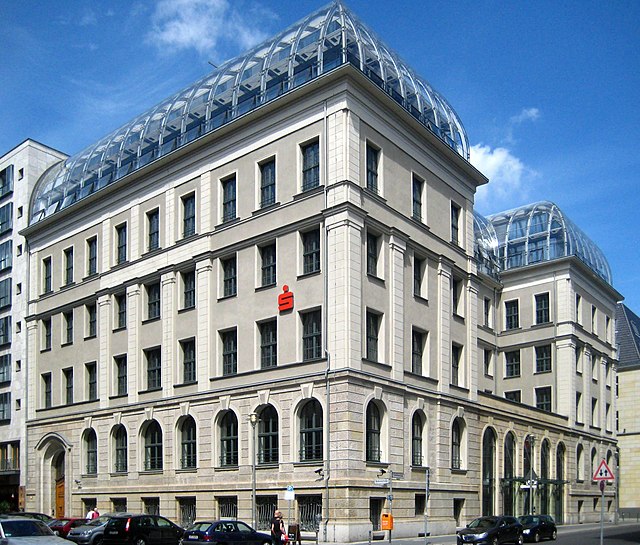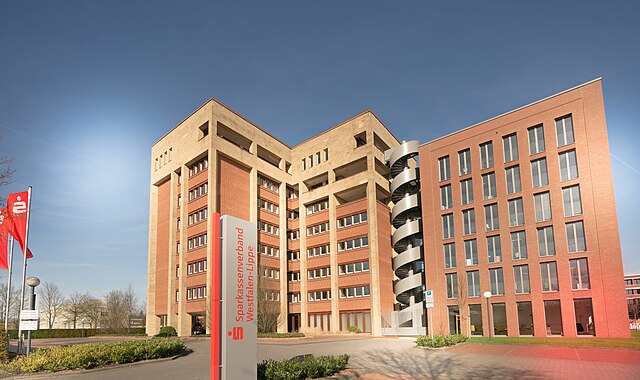German Cooperative Financial Group
The German Cooperative Financial Group is a major cooperative banking network in Germany that includes local banks named Volksbanken and Raiffeisenbanken, the latter in tribute to 19th-century cooperative movement pioneer Friedrich Wilhelm Raiffeisen. The Cooperative Group represents one of the three "pillars" of Germany's banking sector, the other two being, respectively, the Sparkassen-Finanzgruppe of public banks, and the commercial banking sector represented by the Association of German Banks.
Friedrich Wilhelm Raiffeisen (1818-1888)
Wilhelm Haas (1839-1913)
Center-right statesman Andreas Hermes (1878-1964) was President of the Raiffeisen Reichsverband from 1930 to 1933, and participated in the cooperative group's postwar reorganization in West Germany
Building Am Zeughaus 2 in Berlin (right), from 1899 seat of the Preussenkasse, and 1906 extension on Am Zeughaus 1 (left); now offices of the Deutsches Historisches Museum
The Sparkassen-Finanzgruppe is a network of public banks that together form the largest financial services group in Germany and in all of Europe. Its name refers to local government-controlled savings banks that are known in German as Sparkasse, plural Sparkassen. Its activity is overwhelmingly located in Germany.
DSGV head office in Berlin
Sparkassenverband Westfalen-Lippe head office in Münster
Rheinischer Sparkassen- und Giroverband head office in Dusseldorf
Sparkassenverband Rheinland-Pfalz head office in Mainz








